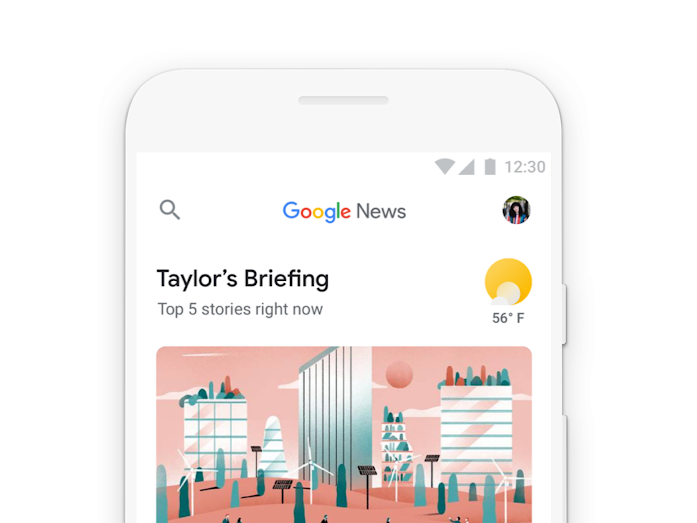
Google has announced major changes to Google News which will use “the best of artificial intelligence to find the best of human intelligence” and make the service more personal to each user.
At the web giant’s annual Google I/O developer conference last night, it announced a plan to unify its news products and “make it easier to keep up” with the wide range of journalism that is now being produced.
The original Google News, created 15 years ago, organised news articles simply to show a range of sources on the same topic.
Now, Google said, it will use a new set of AI techniques to take a constant flow of information as it is published online, analyse it in real time, and organise it into “storylines”.
“This approach means Google News understands the people, places and things involved in a story as it evolves, and connects how they relate to one another”, Trystan Upstill, who leads news product and engineering at Google, wrote in a blog post.
“At its core, this technology lets us synthesise information and put it together in a way that helps you make sense of what’s happening, and what the impact or reaction has been.”
Explaining why the changes are being made, Upstill said: “In the nearly 30 years since the world wide web launched, more than 2 billion websites have been created. It can feel impossible to keep up with the hundreds of thousands of tweets, tens of thousands of pages, and hundreds of hours of video that come online every single minute.
“Amid this deluge of information, important new voices are constantly emerging. There’s more diverse content to discover and more great journalism being produced than ever before. In order to make it easier to keep up and make sense of it all, we set out to bring our news products into one unified experience.”
He added that the all-new Google News will use “the best of artificial intelligence to find the best of human intelligence—the great reporting done by journalists around the globe”.
Google News will also be reorganised into four core sections: “For you”, “headlines”, “favourites”, and “newsstand”.
“For you” will curate brands and topics which a user has said they are interested in through the “favourites” tab, with a briefing of five stories organised by Google News.
It will improve its personalisation the more you use the app and a button next to each story in this section will guide readers to full coverage of that topic.
Upstill said: “With just a tap you’ll see top headlines from different sources, videos, local news reports, FAQs, social commentary, and a timeline for stories that have played out over time.
“Having a productive conversation or debate requires everyone to have access to the same information. That’s why content in Full Coverage is the same for everyone—it’s an unpersonalised view of events from a range of trusted news sources.”
The “headlines” section will also be the same for all users, while “newsstand” will make it easy to access many newspaper and magazine sources and subscribe with one click using a Google account.
Google believes this will drive revenue and distribution for publishers, while the company also hopes it will increase brand awareness by increasing the size of logos within the app.
In September, Google’s director of news partnerships, Madhav Chinnappa, told Press Gazette the company was “very concerned about the news industry” at all levels and committed to “doing more” to help.
The new Google News is also set to pull in more video and images, with a new format called newscasts helping the stories “speak for themselves” visually.
Google’s news brands will be consolidated into the all-new Google News, which is replacing Google Play Newsstand on mobile and desktop and the Google News & Weather app on mobile.
The rollout of Google News – also with a new logo and branding – began last night and will be available to all Android, iOS and desktop users in 127 countries by next week.
Picture: Reuters/Dado Ruvic/File Photo
Email pged@pressgazette.co.uk to point out mistakes, provide story tips or send in a letter for publication on our "Letters Page" blog
